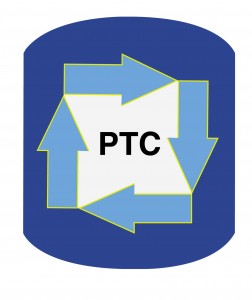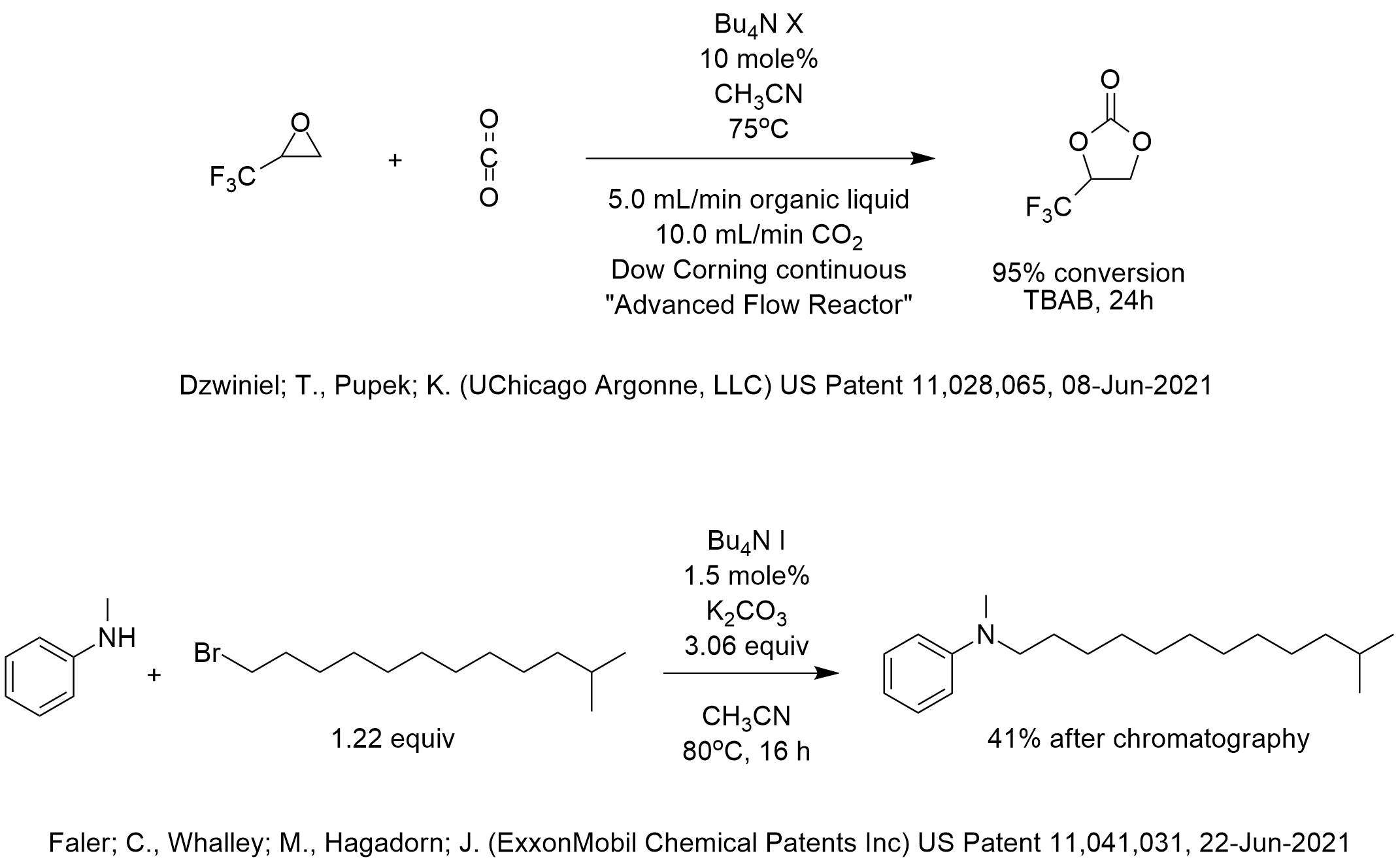Two patents were issued this month that use catalytic tetrabutylammonium salts that are not phase-transfer catalysis reactions.
In one case, tetrabutylammonium iodide was used as a Finkelstein catalyst to activate a primary alkyl chloride in-situ to the iodide. In this case, activation was likely needed due to the N-alkylation of an aniline which typically suffers from low nucleophilicity.
In another case, catalytic tetrabutylammonium salts were used to ring open an epoxide. The resulting haloalkoxide intermediate then attacked carbon dioxide which ring closed to form a cyclic carbonate, useful as a solvent.
The inventors of this patent screened a variety of tetrabutylammonium salts. Unsurprisingly, they found that the TBA salts containing nucleophilic halides such as iodide, bromide and chloride, worked the best, whereas salts containing non-nucleophilic anions, such as tetrabutylammonium hydrogen sulfate, were not effective due to their inability to ring open the epoxide required to initiate the reaction sequence starting from formation of the alkoxide. In addition, the ring closing to the cyclic carbonate requires a leaving group. It makes sense that chloride, bromide and iodide worked well for both the ring opening of the epoxide and the ring closing to the cyclic carbonate. In contrast, hydrogen sulfate, phosphate and fluoride did not work well or work at all. Acetate worked to some degree since it is somewhat nucleophilic and it can act as a leaving group.
Obviously, the halide is catalytic since it attacks the epoxide and later is a leaving group and the role of the tetrabutylammonium cation is to solubilize the halide in the reaction phase. In other words, QX was successfully used in catalytic quantities but the mechanism is not phase-transfer catalysis since the halide is always soluble in the reaction phase.
Another very interesting aspect of this reaction is that the process is continuous using Dow Corning’s Advanced Flow Reactor (TM).
When you do need highly specialized expertise in industrial phase-transfer catalysis to cost-effectively improve the performance of true PTC applications, click here to describe your needs and contact Marc Halpern of PTC Organics.


